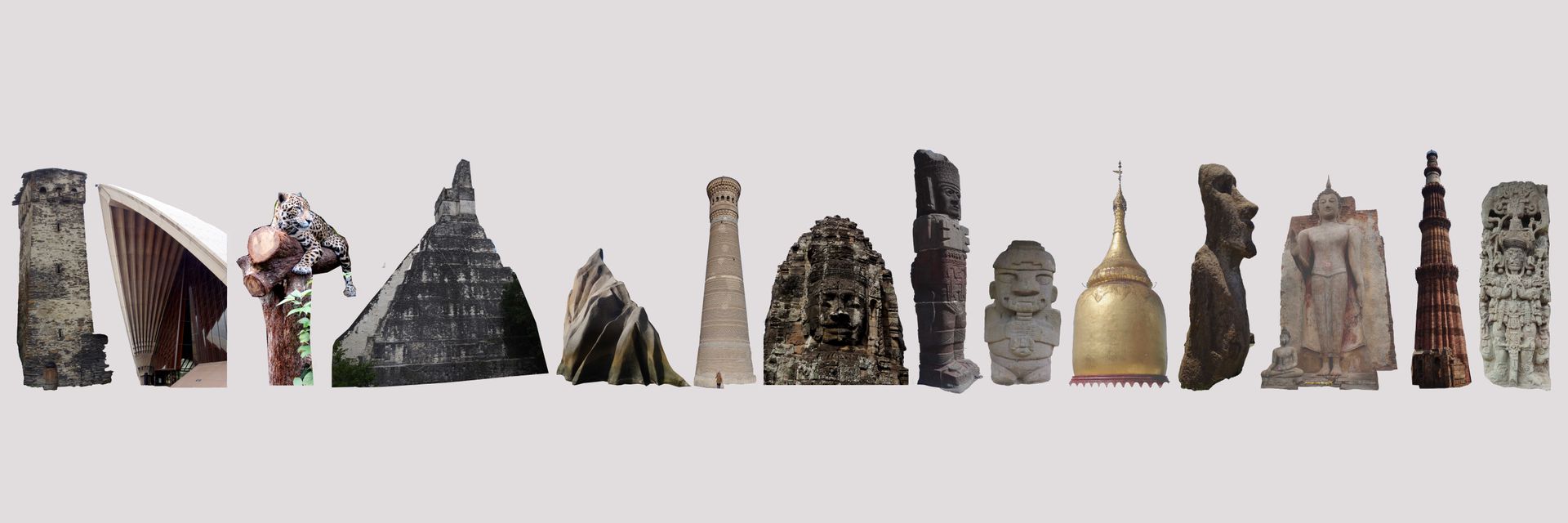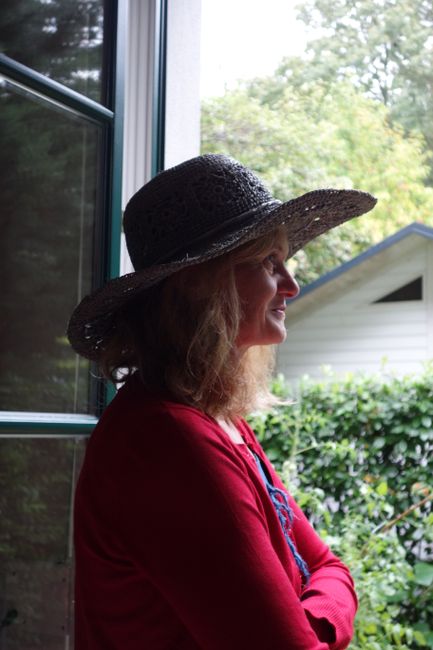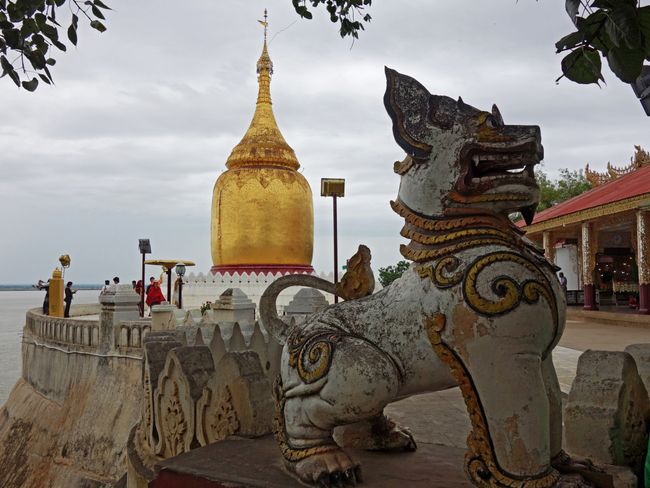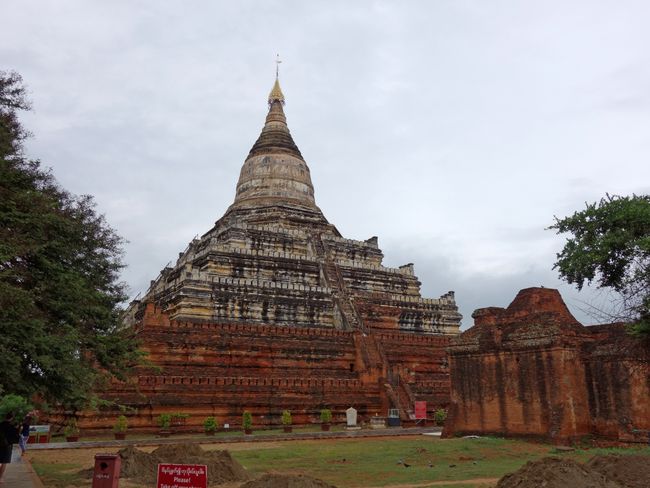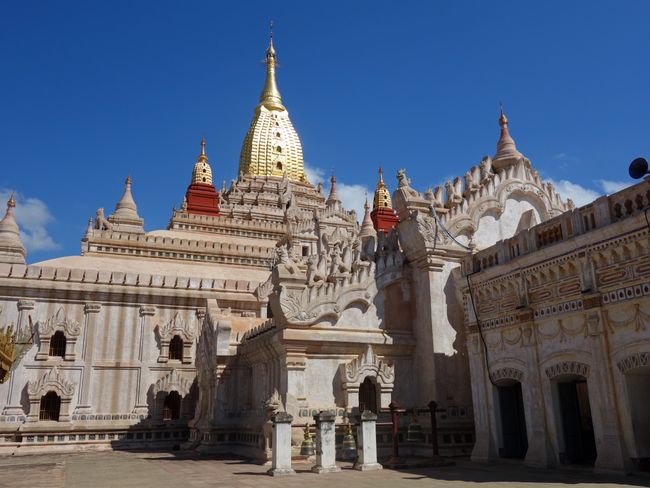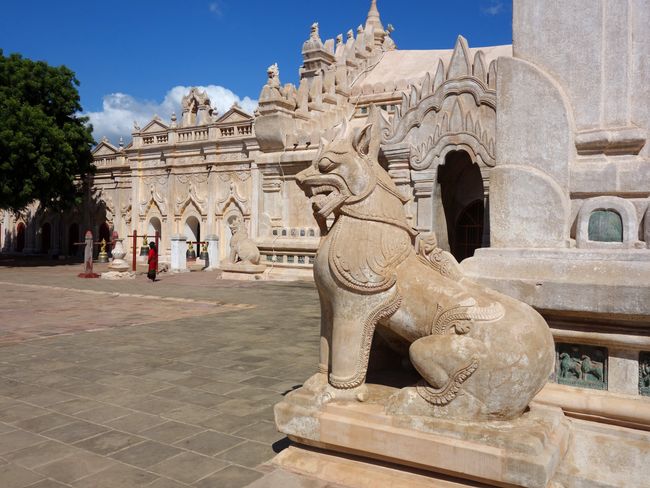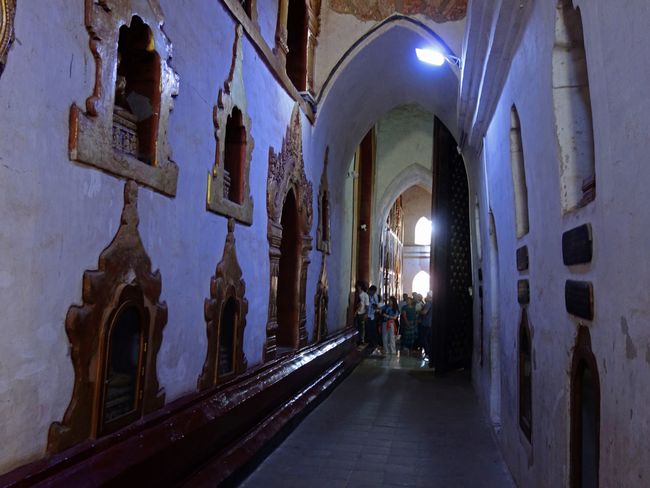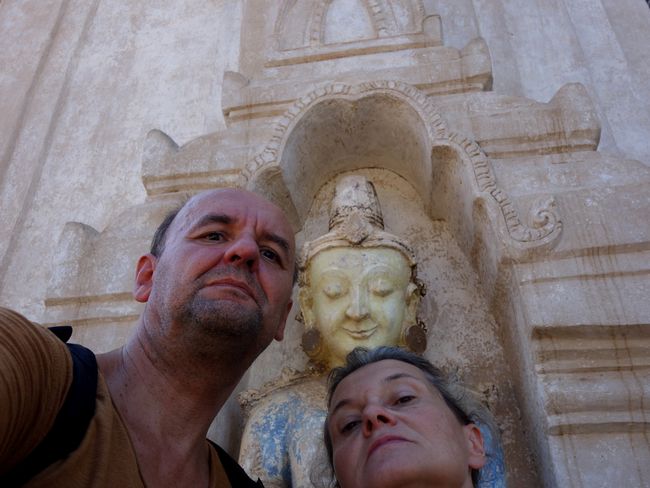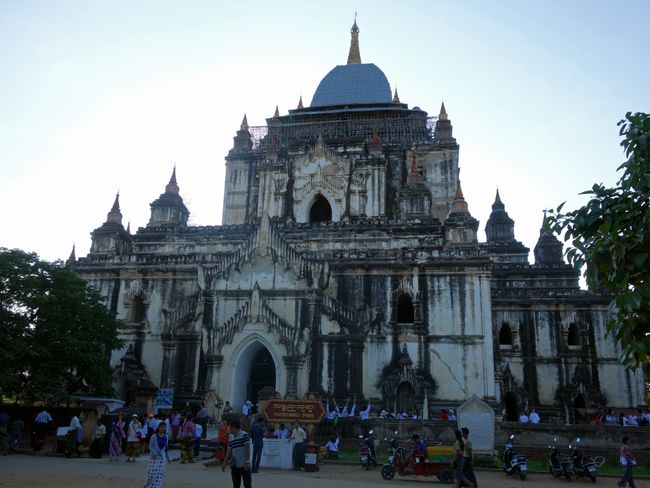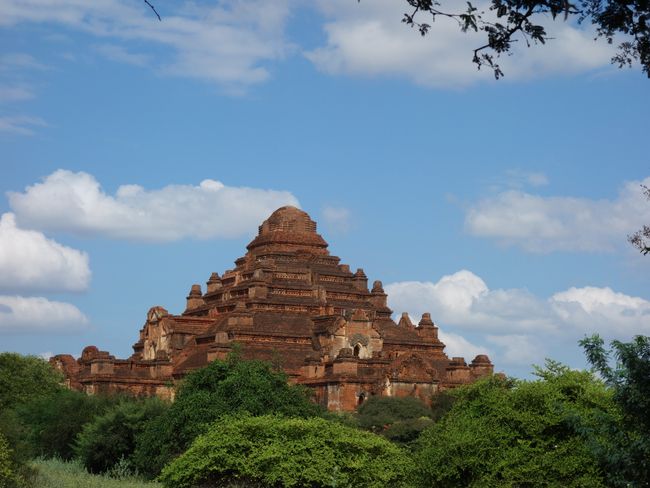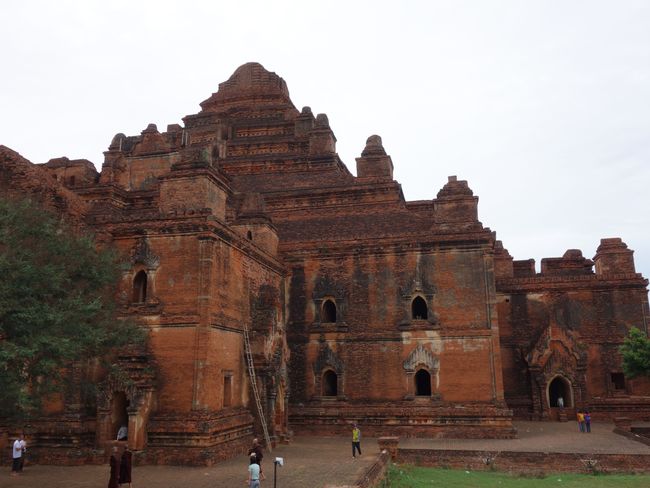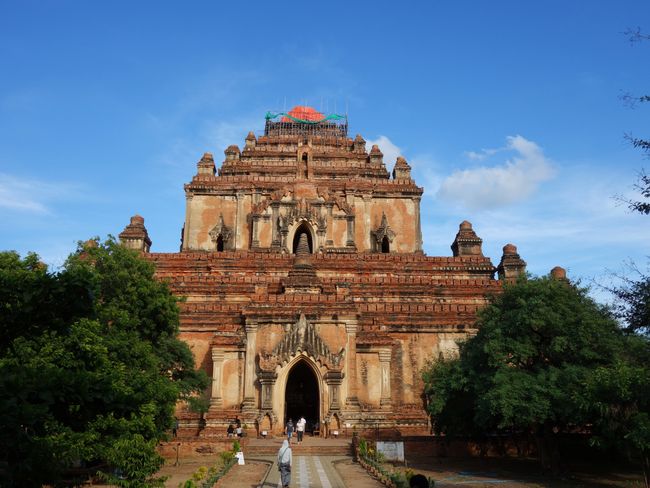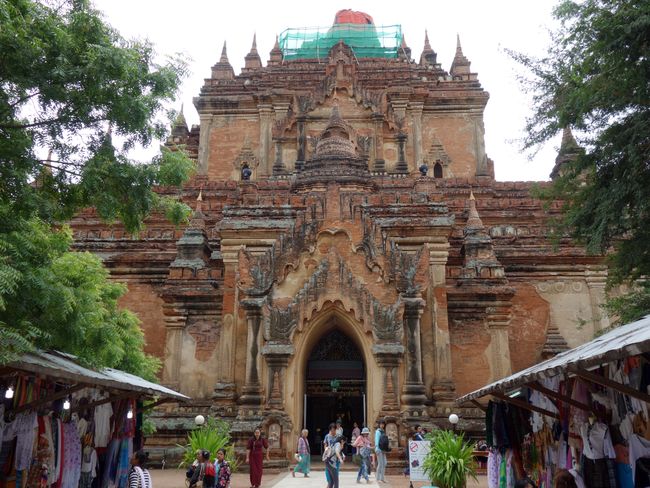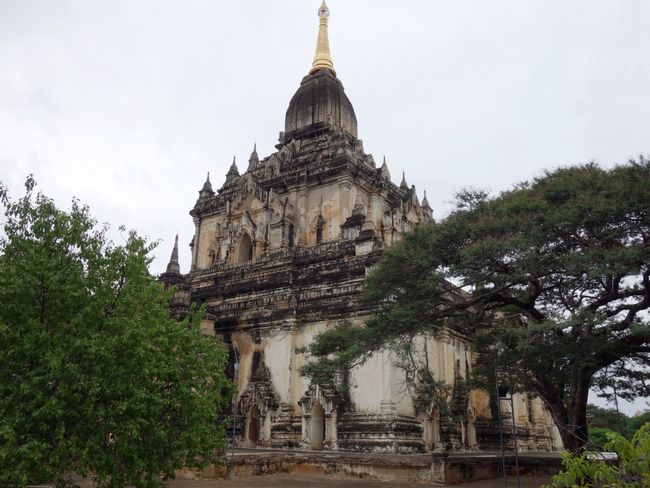Who is the fairest of them all?
Публикувано: 30.10.2018
Абонирайте се за бюлетин
It took us eight days to complete our temple and pagoda program in Bagan. So, we had the ninth day as a bonus day. We used it to explore the structures that we liked the most, covering a distance of 22 kilometers by bike. It was a great idea, I must say. We discovered some details that we had missed during the first visit and were able to appreciate the buildings we had seen in the first few days much better. Let me briefly introduce our favorites here (there are also photos), in the order of their construction.
Bupaya Pagoda (9th century or earlier): the oldest and smallest structure, predating the golden age of Bagan (this is evident from the fact that the stupa looks more like - please forgive me for saying this - an elegant egg rather than a bell); it stands playfully on a platform above the very wide Ayeyarwady River.
Shwesandaw Pagoda (1057): a much larger stupa, towering over many terraces and still adorned with much of its stucco; it was built by the founder of the Bagan Empire, which produced our favorite structures. In the past, it was possible to climb to the top (now it's prohibited), but like in almost all the other stupas, entering was never allowed. It serves as a reliquary for a strand of Buddha's hair.
Ananda Temple (1090): It's hard to believe that this is one of the oldest temples, considering how well-preserved it is (probably due to periodic renovations). It radiates a friendly white color, is completely plastered, and adorned with winged lions and other mythical creatures. It is characteristic of the early temples to have a relatively flat structure, wider than they are tall. What sets Ananda apart is its magnificent interior, truly remarkable (my recommendation: come and see for yourself).
Thatbyinnyu Temple (1144): the tallest of all the temples in Bagan, standing out in many photographs of the pagoda forest (also in our panorama shots); it introduced a new architectural ideal: on top of the existing rectangular structure, which ends with terraces tapering towards the roof, the builders added another, slightly smaller rectangular structure (this is most evident in Thatbyinnyu); the stucco cladding has also been remarkably well-preserved (the ancient Burmese must have had exceptional plastering skills); it's impressive, very impressive.
Dhammayangyi Temple (1170): No, it's not a pyramid, but it is one of the best temples - although it represents a somewhat backward step, as it lacks the second-floor structure found in others. It is a single-story building with terraces on the roof (but what a building it is!); it looks wonderful from the outside and has a great interior as well; its history, however, is quite tragic: it was built by an exceptionally cruel ruler who not only had his father killed but also had the hands of the masons who had poorly layered the bricks (allowing a needle to pass through the gaps) amputated.
Sulamani Temple (1183): THE classic temple of its time (with a second floor!); some consider it to be the most beautiful in Bagan; we think it lacks a bit of character - in short, it's very beautiful, but a bit bland.
Htilominlo Temple (1211): The photo probably doesn't reveal what makes Htilominlo more interesting than its immediate predecessor, Sulamani, but in reality, there is no doubt. For me, it is the most successful temple in terms of exterior design in Bagan: two rectangular structures stacked on top of each other, perfectly connected by arched door and window frames resembling flames. It creates an incredibly elegant and yet captivating structure that rises upwards - and it's also quite large.
Gawdawpalin Temple (1227): it surpasses Htilominlo in height and playfulness; it is much slimmer than its larger and older sibling, and steeper - almost gothic. It's a lot of fun, but it doesn't have the same authority as its predecessor.
We have a slightly childish habit of creating rankings during our trips, although we are not always in agreement. Roby's ranking is: Dhammayangyi, Ananda, and Htilominlo, while mine is: Htilominlo, Dhammayangyi, and Ananda. Then it gets complicated because smaller temples are interspersed among the larger ones: for example, the Lawkahteikpan Temple with its impressive frescoes (# Pagoditis: Buddha's Birth); the Thetkyamuni Temple, which we saw during a boat trip on the Ayeyarwady River, is not only beautifully situated but also has exquisite stucco decorations on its outer walls (we were even allowed to climb onto the roof - a rare exception these days); the Sinbyushin University Temple, particularly elegant and situated in the middle of a long-abandoned campus from the 14th century; the Nanpaya Temple, one of the very few built from sandstone (rather than bricks), with its excellent sandstone reliefs (instead of stucco); the Myaybontha Paya Hla with its outstanding sculptures in the interior (# Pagoditis: Buddha's Birth); and the Sulamani Pagoda, grand and elegant, with hundreds of small brick elephants at its base and (very importantly!) not covered in gold.
Абонирайте се за бюлетин
Отговор
